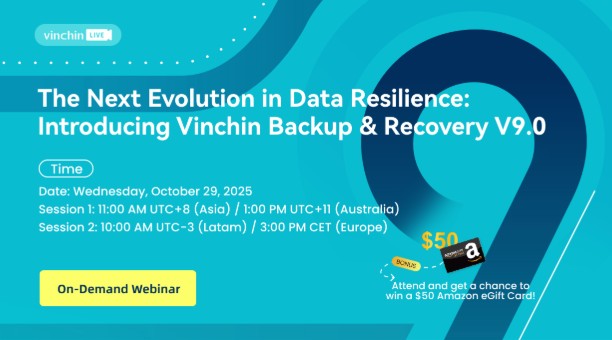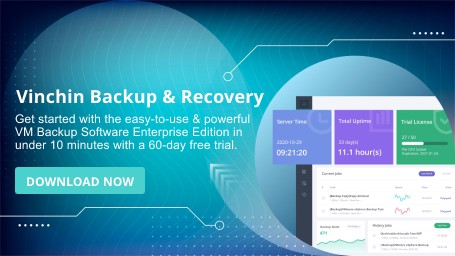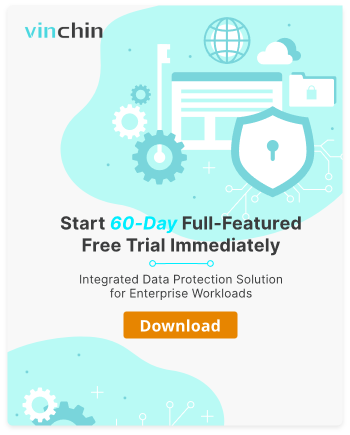-
Insurance Data Characteristics
-
Insurance Backup Challenges
-
Common Backup Methods in Insurance
-
Vinchin’s Data Protection Solution for Insurance
-
Insurance Data Backup FAQs
-
Conclusion
In today’s digital world, insurance companies handle vast amounts of sensitive data every day. From customer policies to claims and financial records, this information is the backbone of the business. But what happens if disaster strikes? That’s where an insurance data backup solution becomes essential. With strict regulations, privacy concerns, and the need for business continuity, insurers must have robust backup strategies in place. This article explores the unique data landscape of the insurance sector, the challenges of protecting that data, common backup methods, and how to choose the right solution for your needs.
Insurance Data Characteristics
Insurance companies are experiencing rapid data growth. Every new policy, claim, or customer interaction adds to a growing digital archive. Policy administration systems, claims processing platforms, and CRM tools generate and store this data in real time. The information comes in many forms: structured databases, scanned documents, emails, images, and even audio files from customer calls.
What makes insurance data unique? First, it is highly sensitive. Personal identifiable information (PII), financial details, and sometimes even health records are all part of the mix. Regulations often require insurers to keep records for decades, meaning long-term retention is not just a best practice—it’s the law. The data is also diverse, with formats ranging from PDFs and spreadsheets to proprietary database files. This diversity and volume make managing and protecting insurance data a complex task.
Insurance Backup Challenges
When considering an insurance data backup solution, insurers face several hurdles. Data privacy compliance is a top concern. Regulations like GDPR and HIPAA require strict controls over how data is stored, accessed, and deleted. Failing to comply can result in heavy fines and reputational damage.
Another challenge is long-term retention requirements. Insurance companies must keep records for many years, sometimes even after a policy has ended. This means backup systems must support reliable, cost-effective storage over long periods.
Large-scale incremental changes are common, as customer data and policy details are updated daily. Backup solutions must efficiently capture these changes without slowing down operations or consuming excessive storage.
Many insurers still rely on complex legacy system integration. Older platforms may not play well with modern backup tools, making it difficult to ensure complete protection.
Finally, insurers must meet a range of local financial regulations that dictate how and where data is stored, adding another layer of complexity to backup planning.
Common Backup Methods in Insurance
To address these challenges, insurers use several backup methods. Full backups create a complete copy of all data at a specific point in time. While reliable, they can be time-consuming and require significant storage.
Incremental backups only save changes made since the last backup, making them faster and more storage-efficient. Differential backups capture all changes since the last full backup, striking a balance between speed and completeness.
Many insurers now use cloud-based backups to store data offsite, improving disaster recovery and reducing the risk of data loss from local incidents. Tape archiving remains in use for long-term, cost-effective storage—especially for meeting regulatory retention requirements.
Each method has its strengths; many insurance companies use a combination to ensure both quick recovery and long-term compliance.
Vinchin’s Data Protection Solution for Insurance
Vinchin has already delivered data protection solutions to numerous enterprises in the insurance industry. It offers broad compatibility, supporting over 19 virtualization environments—including VMware®, Hyper-V®, Proxmox®, plus physical servers, databases, on-premises, or cloud file storage—meeting diverse IT architecture needs across insurance organizations.
If you need migration capabilities,Vinchin provides flexible full-system migrations across any supported virtual, physical, or cloud hosts, making modernization projects simple while minimizing risk.
For critical workloads running on virtual or physical machines, Vinchin delivers real-time backup & replication, offering extra recovery points plus automated failover—helping reduce RPOs & RTOs so you recover quickly when needed.
To guarantee reliability, Vinchin supports automatic integrity checks & isolated recoverability validation, ensuring your backups work when it matters most. Vinchin also enables building resilient disaster-recovery systems through automated retention policies, cloud archiving/backups, remote replicas, or DR centers—for fast restoration after incidents.
With its simple, B/S web console & wizard-driven workflows, you can easily set up jobs—even without deep technical expertise. A free 60-day trial lets you test Vinchin Backup & Recovery. Comprehensive documentation & patient support engineers help you deploy smoothly—so you protect your critical insurance data with confidence.
Insurance Data Backup FAQs
Q1: How can I ensure my insurance data backups meet compliance requirements?
A1: Choose a solution that supports regulatory standards like GDPR and HIPAA, and offers customizable retention policies.
Q2: What’s the best way to protect against ransomware in the insurance sector?
A2: Use backup solutions with immutable storage, regular integrity checks, and isolated recovery environments.
Q3: How do I handle backups for both legacy and modern systems?
A3: Select a backup platform that supports a wide range of environments, including physical, virtual, and cloud systems.
Conclusion
Effective insurance data backup solutions are vital for protecting sensitive information, ensuring business continuity, and meeting strict compliance standards. With its broad compatibility, advanced features, and dedicated support, Vinchin stands out as an ideal partner for insurance companies seeking reliabledata protection.
Share on:











